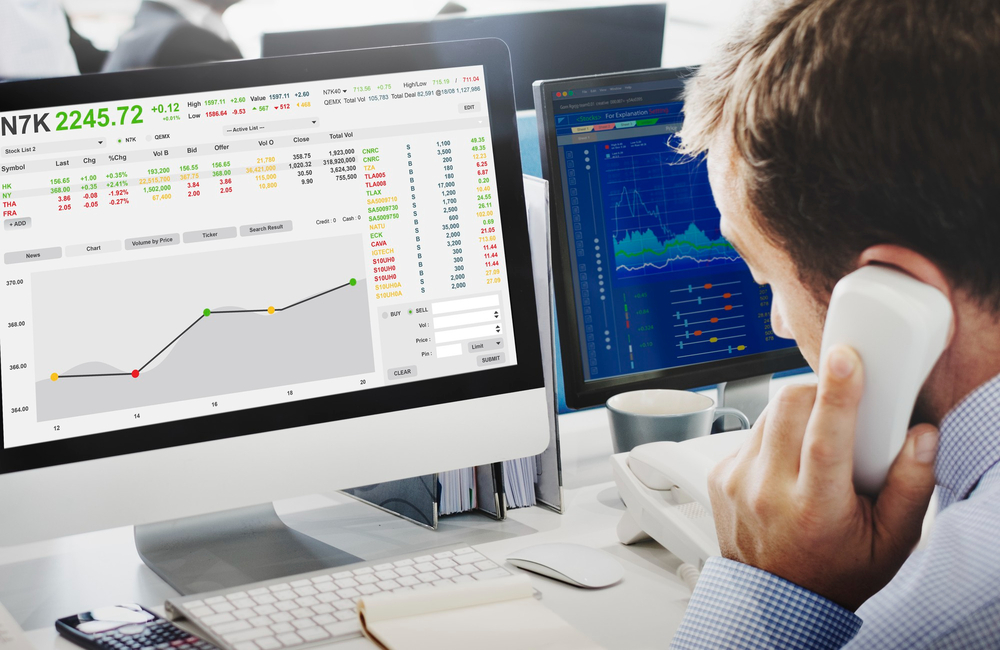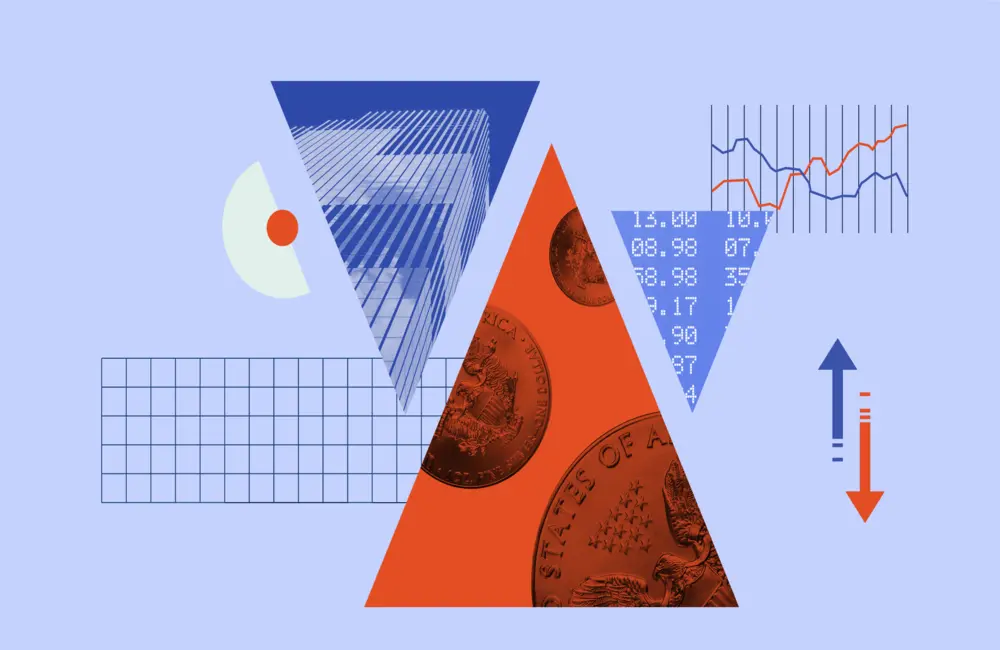US investors are looking ahead to new inflation numbers due out this week after data on Friday showed the economy was still adding jobs at a blistering pace.
ASX futures were up 20 points, or 0.3 percent, at 6597 at 8.00am on Monday, suggesting a positive open.
Overseas, the S&P 500 drifted lower in the first hours after the opening bell on Friday, before climbing as the session wore on, only to surrender those gains to close the day down 0.1 percent. The Dow Jones Industrial Average fell 0.1%. The tech-heavy Nasdaq composite gained 0.1%, extending its outperformance for the week.
The S&P 500 was up 1.9 percent this week, and the Dow Jones Industrial Average gained 0.8 percent. The tech-heavy Nasdaq Composite surged 4.6 percent, and on Friday advanced for a fifth straight session, marking its longest winning streak of the year.
The Labor Department’s June jobs report on Friday indicated that rising interest rates and high inflation are so far not slowing hiring down. The U.S. economy added 372,000 jobs in June, far above the 250,000 that economists surveyed by The Wall Street Journal expected.
Some investors said they were cheered by the pace of hiring, but others said it bolstered the case for the Fed moving ahead with a 0.75-percentage-point increase at its next meeting. The Fed hiked rates by that much in June for its biggest interest-rate increase since 1994. The rate increases have fueled volatility during the year and have raised fears that the moves to beat back inflation could push the economy into a recession.
“On one hand, it’s great to see durable demand for jobs but pressure on the Fed to hike rates will depress the bulls,” said Mike Bailey, director of research at FBB Capital Partners.
At home, the S&P/ASX 200 ended 0.45% higher at 6678.0, for its biggest weekly gain since mid-March.
The benchmark was 1.0% higher in early trade and was creeping back up again, then plummeted just around the time of reports that former Japan Prime Minister Shinzo Abe had been shot.
Commodity, tech and industrial stocks helped local markets, with coal, oil, gold, lithium and iron-ore company shares all advancing.
Lithium miners Lynas (ASX:LYC), Mineral Resources (ASX:MIN), Pilbara Minerals (ASX:PLS) and Liontown (ASX:LTR) added between 4.5% and 7.4%.
Gold producer St Barbara climbed 9.6% after it met its FY output guidance. The ASX 200 rose 2.1% for the week.
For all those commodities, iron ore fell 0.7% to US$114.05, Brent crude oil fell 0.5% to US$106.45, whereas gold remained largely unchanged at US$1741.50.
In local bond markets, Australian 2 Year government yields rose for a second day to 2.52% and the 10 Year to 3.47%. Overseas 2 Year US Treasury notes saw a yield increase to 3.10% and 10 Year US Treasury notes had a yield increase to 3.08%.
The Australian dollar was up at 68.60 US cents, from 68.37 at the previous close. The Wall Street Journal Dollar Index, which measures the US dollar against 16 other currencies dipped slightly to 98.78.
Asia
China stocks finished the session below the flatline, erasing opening gains that came as the auto sector eased back from recent advances on continued policy support from Beijing for the industry. The benchmark Shanghai Composite Index slipped 0.2% to 3356.08, and the Shenzhen Composite Index was down 0.3% at 2219.90. The tech-heavy ChiNext Price Index led the lower on a 1.1% fall to 2817.64. Passenger car makers, car dealers and auto service providers were among the biggest losers in the downturn, after the sector gained on Thursday riding on officials’ plans for additional consumption stimulus in the sector. The pullback could be partly due to profit-taking pressure after their strong recent gains, N-Securities analysts said in a note.
Hong Kong stocks climbed, the key Hang Seng Index climbing 0.4% to 21725.78 on widespread advances. Overnight gains on Wall Street lent support to Hong Kong equities, IG market strategist Yeap Jun Rong said in a note. Additionally, “fears of rising virus cases in China appear to be overshadowed for now by China’s intention to rev up the economy with a US$224 billion stimulus infrastructure package” he added. CSPC Pharmaceutical topped HSI gainers by adding 5.9%. Alibaba Group added 3.7%, Sunny Optical up 3.3% and China Resources Land up 2.6%.
Japanese shares closed fractionally higher after trimming some earlier gains after news that former Prime Minister Shinzo Abe was shot while delivering a speech. The energy and financial stocks outperformed. The oil explorer Inpex rose 2.7 percent and Resona Holdings added 2.3 percent. As Abe prepares to call an early election, Japan's reflationary policy may run out of steam, analysts say, despite a helping hand from Abe's ruling party likely gaining more votes on Sunday at an upper-house election. The Nikkei Stock Average gained 0.1% to 26517.19.
Europe
US non-farm payroll data spurred a mixed reaction among US investors, while European markets gained. The pan-European Stoxx Europe 600 rose 0.5 percent, the French CAC 40 added 0.4 percent and the German DAX was up 1.3 percent, with automotive stocks among the biggest pan-European gainers.
“The latest US job report served to calm concerns that the long-expected recession might finally be impacting on business investment and hiring decisions,” IG analyst Joshua Mahony says. “Still, we have witnessed some weakness for US markets as stronger-than-expected payrolls and stable unemployment/wages bolster the case for a 75 bp hike three weeks from now.”
London’s FTSE 100 rose for a third consecutive day on Friday, adding 0.1 percent despite a week of significant political upheaval in the U.K. Fashion retailer JD Sports was one of the top performers, its shares closing up 2.2% after it appointed Andy Higginson to replace Peter Cowgill as chairman.
North America
The S&P 500 logged a sharply higher week, welcome respite for many investors after an extended period of volatility.
The week featured some sharp intraday swings, but on the whole investors received a reprieve from the heavy selling across markets that has defined much of the year.
On Friday, the S&P 500 dipped shortly after the opening bell, gained some ground later in the session and then gave up those gains to end the day. The S&P 500 lost 0.1%. The Dow Jones Industrial Average fell 0.1%. The tech-heavy Nasdaq Composite increased 0.1%, continuing its week of outperformance.
The S&P 500 gained 1.9 percent this week, and the Dow Jones Industrial Average was up 0.8 percent. The tech-heavy Nasdaq Composite surged 4.6 percent and won on Friday for the fifth day in a row, recording its longest winning streak of the year.
Some investors have leaped back into the market, hoping to snag bargains after a period of volatility that has sent the S&P 500 down 18 percent for the year. In recent sessions, many investors went back to a familiar trade: Buying shares of tech companies.
The technology and communication services groups in the S&P 500 have been among the biggest beneficiaries in recent days. Shares of Tesla and chip makers including Micron Technology were some of the best performers in the S&P 500 on the week, up roughly 10% apiece. The ARK Innovation ETF has gained nearly 14%. At the same time, shares of energy companies, which were the star performers this year, have failed to keep up.
“All of the folks we’re speaking to at the moment are looking to increase their equity exposures,” said SJ Zaremba, director at RJA Asset Management. Some investors were even seeking to do so using options strategies, Mr. Zaremba said, so as not to miss the possible traditional rebound later in the year.
Investors have sifted through every piece of economic data to be reported in recent days amid rising fears of a recession. Fears of a possible economic deceleration have already reverberated throughout stock, bond and metals markets, adding to wild vacillations of everything from Treasurys to copper, the latter recently hitting its lowest price in almost two years.
On Friday, the Labor Department’s June jobs report was a reminder that rising interest rates and high inflation have, at least so far, not been crimping hiring. The US economy created 372,000 new jobs in June, easily exceeding the 250,000 expected by economists who responded to a poll from The Wall Street Journal.
Some investors said the pace of hiring was heartening, but others said it increased the probability that the Fed would move ahead with a 0.75-percentage-point increase at its next meeting. The Fed lifted rates by that much in June, the largest interest-rate increase since 1994. The interest rate increases have led to turbulence all year long and heightened fears that the efforts to tame inflation could send the economy into a recession.
“On the one hand, it’s good to see demand for jobs holding up nicely but demand on the Fed to increase rates will put a damper on the bulls,” said Mike Bailey, director of research at FBB Capital Partners.
While the jobs report was encouraging, other economic data has disappointed, creating mixed signals for investors. Recently, data have indicated a slowdown in activity in sectors from manufacturing to home construction.
A closely watched recession predictor, the yield curve, stayed inverted Friday with the yield on two-year government bonds trading higher than the 10-year version. The yield on the benchmark 10-year Treasury note climbed following the monthly jobs report, trading at 3.098%, marking its largest weekly yield gain in about a month.
The yield on the two-year government notes was at 3.119%, after rising to 3.039% in the previous session. Bond yields go up when prices fall.
Central bankers this week reiterated their determination to fight inflation, first in minutes from the Fed’s June meeting and then again on Thursday when two officials voiced support for another 0.75-percentage-point interest-rate increase later this month. The comments also suggested that recession fears may be exaggerated.
Raphael Bostic, the president of the Federal Reserve Bank of Atlanta, said in a CNBC interview Friday that a 0.75-percentage-point increase in interest rates would be appropriate.
The jobs report “gives the Fed a little bit more confidence that it can move aggressively without doing a lot of damage to the labor market,” said Mona Mahajan, senior investment strategist at Edward Jones.
But, she said, at some point the hikes “will hit the real economy.”
In corporate news, shares of Twitter dropped $1.98, or 5.1 percent, to $36.81 after it announced Thursday that it would cut 30 percent of its talent-acquisition team.
GameStop shares fell $6.58, or 4.9%, to $128.54, as the retailer also said it was slashing staff and ousted its finance chief.
Next week, many expect coming inflation data and the start of the second-quarter earnings season to bring further volatility.
“There are a lot of head fake rallies in a bear market, and this is, I believe, one of them,” said Rupal Bhansali, chief investment officer of global equities at Ariel Investments. “There’s a lot more pain left in the journey.”























